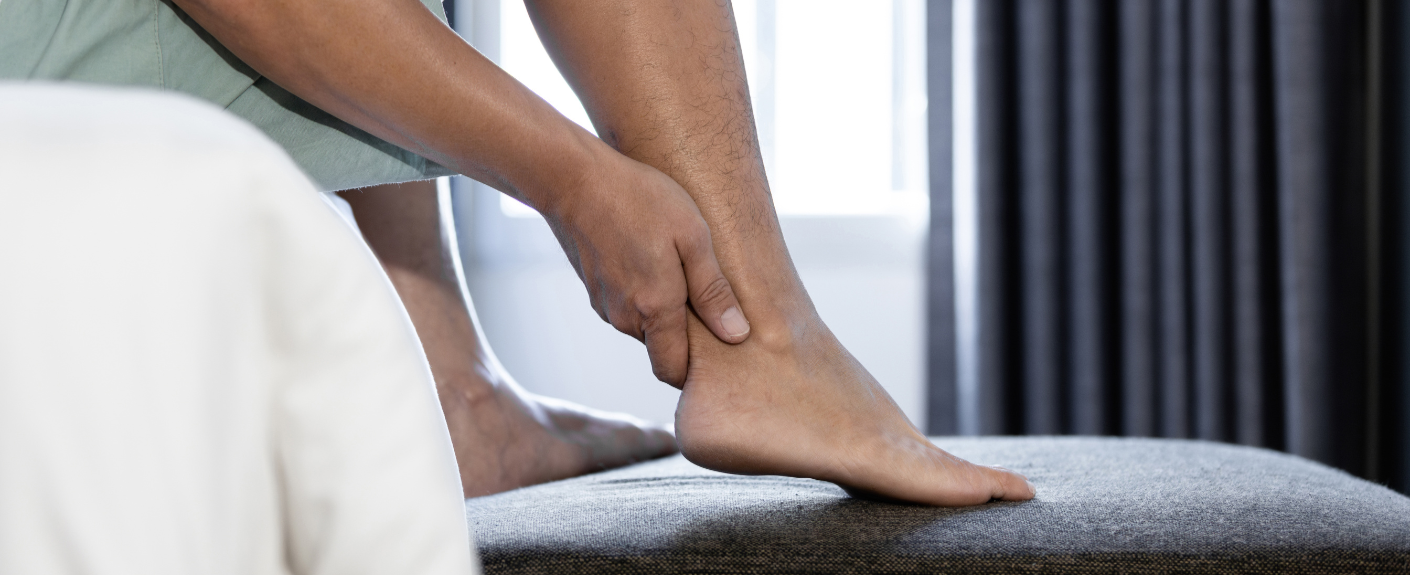

Every week, each of our podiatrists sees at least a handful of people with Achilles pain. Some patients have had it on and off for
years, while others are experiencing it for the first time or as a recent injury. Either way, it’s not too surprising—the Achilles
tendon takes on a massive load every time we walk and run. To top it off, the Achilles tendon also has a notably poorer blood supply than
other tendons around the body.
So, what’s one way we’re going above and beyond to help you recover from your Achilles injury and get out of pain as quickly as possible? It’s shockwave therapy. Here’s how it works to help you get the best outcomes for your Achilles injury.
Here’s a look into what shockwave is, the evidence behind its use for Achilles pain, and whether it could be a good option for you, too.
There are currently numerous studies supporting shockwave therapy as a way to significantly reduce Achilles pain levels while supporting a healthy recovery. Specifically:
We understand that every Achilles injury and foot condition is unique and complex. That’s why shockwave therapy isn’t a standalone solution in our clinic—it’s one part of a well-rounded treatment plan tailored specifically for you. During your biomechanical assessment, which is the assessment we perform when you come in for foot pain or injury, we’ll evaluate your medical and injury history, check your range of motion, assess muscle strength and foot posture, and use tools like video gait analysis and pressure mapping to get a complete picture of your needs.
After your assessment, your podiatrist will explain the findings and design a treatment plan that aligns with your goals. To ensure the best possible results, shockwave therapy may be combined with other treatments, such as custom orthotics, targeted stretching and strengthening exercises, supportive footwear, foot mobilisation, dry needling, and more.
We’ve detailed everything you need to know here regarding what shockwave is and how it works.
To book your appointment for shockwave or any of our other pain relieving therapies, book an appointment with us online or call (09) 523 2333.

We’ve all had those days — you come home after hours on your feet, kick off your shoes, and notice your ankles look puffier than usual.
Swelling in the feet, ankles, or legs (known medically as edema) isn’t always a reason to panic. It can be as simple as a
salty lunch or a long flight.
But what if it’s happening more often — or seems to be getting worse? Swelling can sometimes be a sign of something more serious. Here’s
what could be going on and when to check in with your doctor.
.jpg)
Every year on October 8th, the world celebrates International Podiatry Day - a day dedicated to
raising awareness about foot health and the vital role that podiatrists play in our overall well-being.
Keeping your family on their feet and helping them to walk, run, play and exceed their goals is why we love getting up in the morning.
Ground Floor, One Health Building
122 Remuera Rd, Remuera
Auckland 1050, New Zealand
| MON - FRI | 7:30am – 6:30pm |
| SAT | 8:30am – 4:30pm |
| SUN | Some availability |
Make an Appointment
Online Schedule
Our virtual receptionist is available 24/7 to help with general questions, booking requests, and clinic information, even when our team is busy, or it's after hours.
Whether you're calling us or using our website, you'll get fast assistance any time of day. And if your query needs a personal touch, a member of our team will follow up as soon as possible.
If you’d like to see a podiatrist who speaks your preferred language, just give us a call and we’ll help you book.